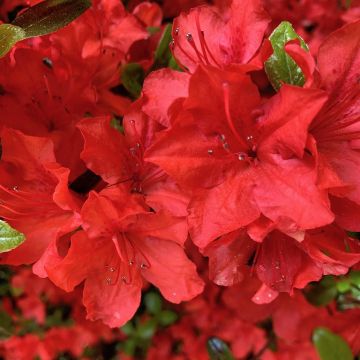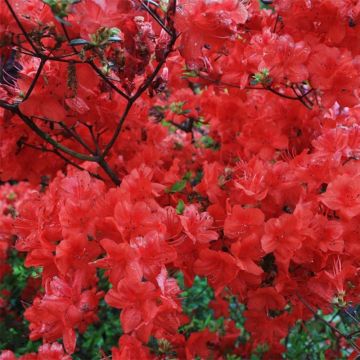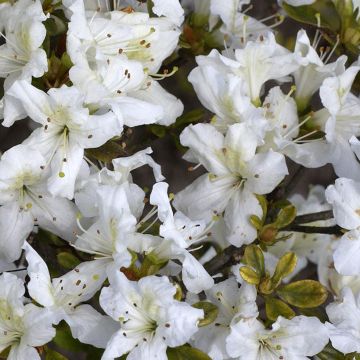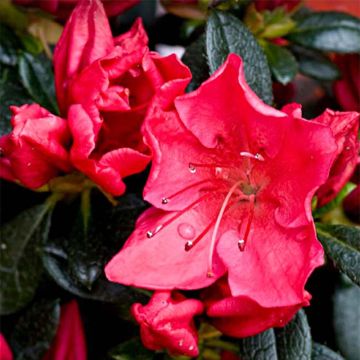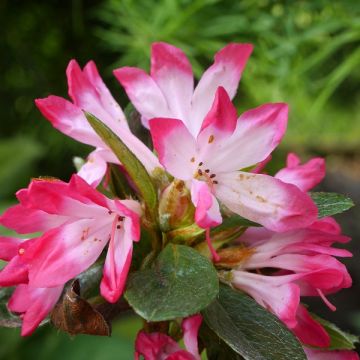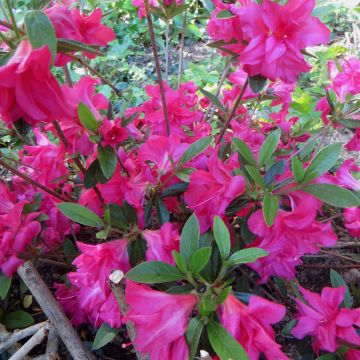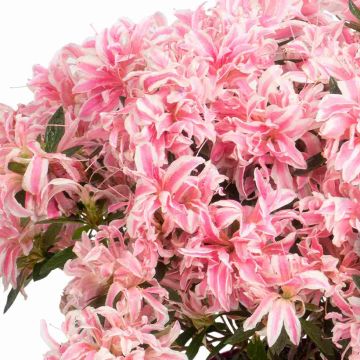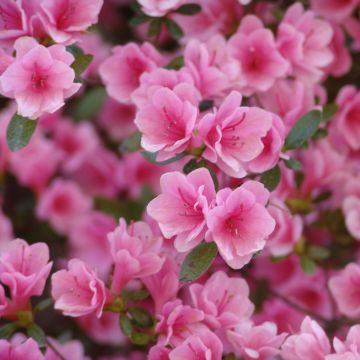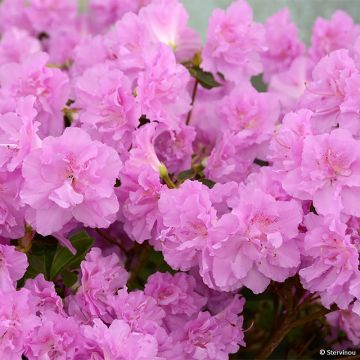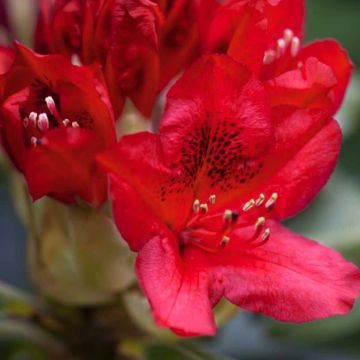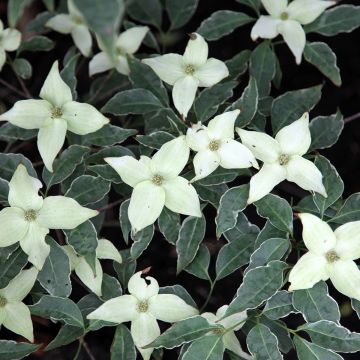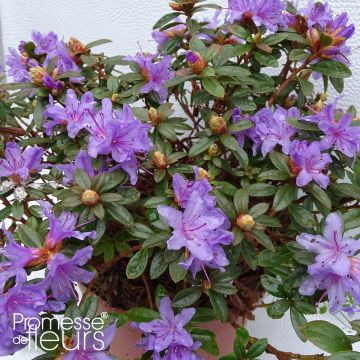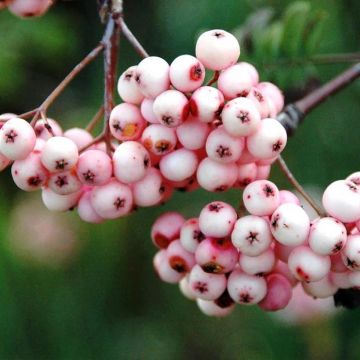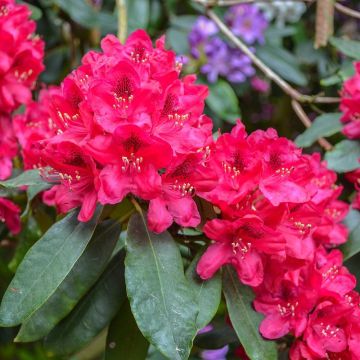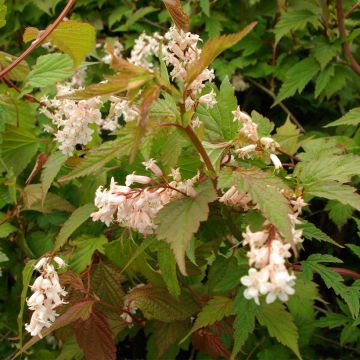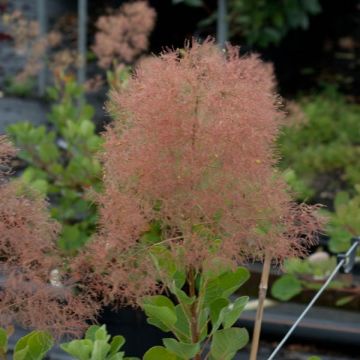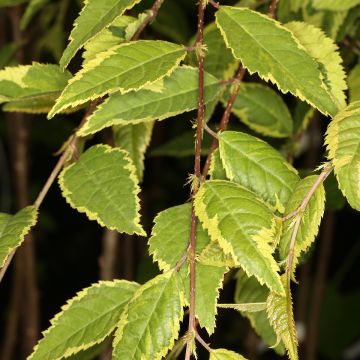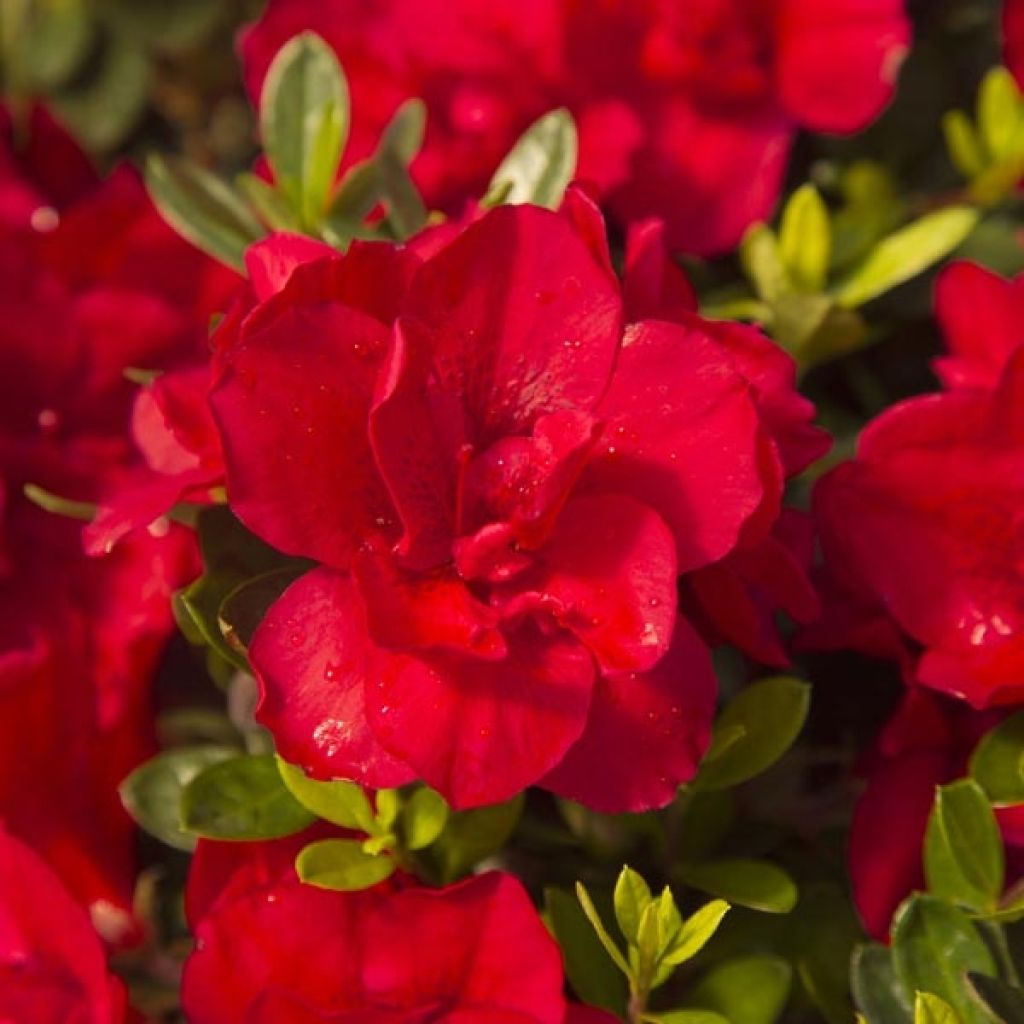

Japanese azalea ENCORE Bonfire
Japanese azalea ENCORE Bonfire
Rhododendron (Azalea) ENCORE® Bonfire
Japanese Azalea
This item cannot be shipped to the selected country
Delivery charge from €5.90
Delivery charge from €5.90
More information
Schedule delivery date,
and select date in basket
This plant carries a 24 months recovery warranty
More information
We guarantee the quality of our plants for a full growing cycle, and will replace at our expense any plant that fails to recover under normal climatic and planting conditions.
From €5.90 for pickup delivery and €6.90 for home delivery
Express home delivery from €8.90.
From €5.90 for pickup delivery and €6.90 for home delivery
Express home delivery from €8.90.
Does this plant fit my garden?
Set up your Plantfit profile →
Description
The Encore Hybrid Azalea 'Bonfire' is a compact variety, with vibrant raspberry-red, single and semi-double flowers, belonging to the Encore series which has made the Japanese azalea, now with successive and spectacular flowerings, a plant almost as decorative as the rose. This lovely evergreen bush blooms two to three times a year depending on the climate: first abundantly at the end of winter or the beginning of spring, then during the summer before a beautiful resurgence in late summer or early autumn. At home in the sun or partial shade, relatively hardy, the Encore hybrid azaleas are very versatile and come in a variety of styles, with single or double flowers, more or less compact, in a range of colours including white, red, various shades of pink, salmon, and orange vermillion. Mix them together to create rustic flower beds or more sophisticated displays. Like all azaleas, 'Bonfire' likes non-calcareous soils, moist but well-drained, fertile enough to sustain its successive flowerings.
From a botanical point of view, Azaleas are actually Rhododendrons, plants from the large Ericaceae family. The hybrids from the Encore series, distributed by Globe Planter, were created thanks to Buddy Lee, a talented American nurseryman specializing in these plants. These quite fantastic azaleas are the result of a long process of hybridization and selection, with the aim of obtaining varieties capable of flowering several times a year, as well as withstanding the sun.
'Bonfire' is a moderately sized variety, with a rounded bushy habit. The shrub reaches about 80 cm (31.5 in) in height and spread, growing rather slowly it is slightly faster than the traditional Japanese azaleas. It starts flowering, abundantly and brightly, in March-April in the form of semi-double and single, bright red-pink flowers which are close to magenta, remaining extremely vivid, and not fading. They measure about 5 cm (2 in) in diameter, are funnel-shape and gathered in small terminal clusters. A second wave of flowers begins at the end of May, when new shoots appear, already bearing new flower buds that open in summer. A final flowering occurs in early autumn, usually in October. The foliage of the Japanese azalea, more or less evergreen depending on the severity of the winter, consists of small, simple, glossy, elliptical leaves with smooth edges, arranged alternately on the branches. They are a rather light green in spring, darkening in summer. In 'Bonfire', they have a slightly velvety appearance and take on purplish hues in cold weather. This variety is hardy down to -12/-15°C (10.4 - 5 °F). Azaleas and rhododendrons have a shallow root system that always needs to be kept moist, but they also dislike waterlogged soil which would suffocate them.
Japanese azaleas thrive in cool climates with distinct winters, planted in humus-rich, acidic soil, such as ericaceous soil. Under these conditions, they are very beautiful evergreen shrubs for flower beds or flowering pots, attractive all year round. They happily accompany heathers, Japanese maples, or their Chinese relatives that change colour throughout the seasons. Combine them with flowering cherry trees, Japanese camellias, as well as their graceful, often fragrant, autumn-flowering cousins, the Camelia sasanqua hybrids. This 'Bonfire' variety looks wonderful in a large, moist, cool rockery or at the front of flower beds in a small Japanese or romantic-style garden. It will also make a beautiful pot plant to decorate a terrace or balcony, planted in suitable soil and watered with lime-free water.
Report an error about the product description
Japanese azalea ENCORE Bonfire in pictures
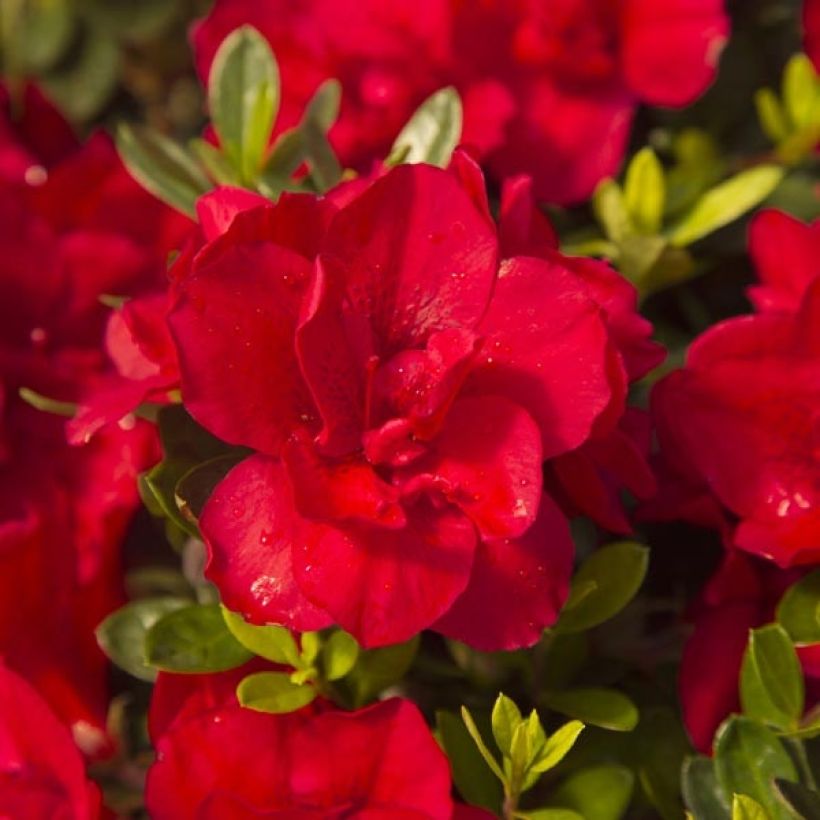



Plant habit
Flowering
Foliage
Botanical data
Rhododendron (Azalea)
ENCORE® Bonfire
Ericaceae
Japanese Azalea
Cultivar or hybrid
Other Japanese Azalea
Planting and care
The Encore hybrid Azalea does well in the sun (not too intense), but its favourite position is partial shade, especially in hot and very sunny regions. Plant it in a humus-rich and well-drained, non-chalky soil. When planting, make sure not to bury the root ball too deep, it should be level with the top of the soil. Water abundantly with lime-free water during dry periods, at least once a week in the first year. In spring, apply fertilizer for ericaceous plants. Pruning is not essential but it is a good idea to prune lightly after flowering to keep the plant looking neat. Remove spent flowers to encourage new growth. The Azalea suffers from very few diseases when well established outdoors. It can be attacked by weevils that eat the edges of the leaves and rootlets, and by the famous "lace bug" which do not often cause major damage. If the soil is chalky or poorly drained, and if the plant is planted too deep, the leaves may turn yellow and eventually die. Japanese azaleas do not tolerate the dry atmospheres of our interiors at all.
Planting period
Intended location
Care
-
, onOrder confirmed
Reply from on Promesse de fleurs
Spring-flowering shrubs
Haven't found what you were looking for?
Hardiness is the lowest winter temperature a plant can endure without suffering serious damage or even dying. However, hardiness is affected by location (a sheltered area, such as a patio), protection (winter cover) and soil type (hardiness is improved by well-drained soil).

Photo Sharing Terms & Conditions
In order to encourage gardeners to interact and share their experiences, Promesse de fleurs offers various media enabling content to be uploaded onto its Site - in particular via the ‘Photo sharing’ module.
The User agrees to refrain from:
- Posting any content that is illegal, prejudicial, insulting, racist, inciteful to hatred, revisionist, contrary to public decency, that infringes on privacy or on the privacy rights of third parties, in particular the publicity rights of persons and goods, intellectual property rights, or the right to privacy.
- Submitting content on behalf of a third party;
- Impersonate the identity of a third party and/or publish any personal information about a third party;
In general, the User undertakes to refrain from any unethical behaviour.
All Content (in particular text, comments, files, images, photos, videos, creative works, etc.), which may be subject to property or intellectual property rights, image or other private rights, shall remain the property of the User, subject to the limited rights granted by the terms of the licence granted by Promesse de fleurs as stated below. Users are at liberty to publish or not to publish such Content on the Site, notably via the ‘Photo Sharing’ facility, and accept that this Content shall be made public and freely accessible, notably on the Internet.
Users further acknowledge, undertake to have ,and guarantee that they hold all necessary rights and permissions to publish such material on the Site, in particular with regard to the legislation in force pertaining to any privacy, property, intellectual property, image, or contractual rights, or rights of any other nature. By publishing such Content on the Site, Users acknowledge accepting full liability as publishers of the Content within the meaning of the law, and grant Promesse de fleurs, free of charge, an inclusive, worldwide licence for the said Content for the entire duration of its publication, including all reproduction, representation, up/downloading, displaying, performing, transmission, and storage rights.
Users also grant permission for their name to be linked to the Content and accept that this link may not always be made available.
By engaging in posting material, Users consent to their Content becoming automatically accessible on the Internet, in particular on other sites and/or blogs and/or web pages of the Promesse de fleurs site, including in particular social pages and the Promesse de fleurs catalogue.
Users may secure the removal of entrusted content free of charge by issuing a simple request via our contact form.
The flowering period indicated on our website applies to countries and regions located in USDA zone 8 (France, the United Kingdom, Ireland, the Netherlands, etc.)
It will vary according to where you live:
- In zones 9 to 10 (Italy, Spain, Greece, etc.), flowering will occur about 2 to 4 weeks earlier.
- In zones 6 to 7 (Germany, Poland, Slovenia, and lower mountainous regions), flowering will be delayed by 2 to 3 weeks.
- In zone 5 (Central Europe, Scandinavia), blooming will be delayed by 3 to 5 weeks.
In temperate climates, pruning of spring-flowering shrubs (forsythia, spireas, etc.) should be done just after flowering.
Pruning of summer-flowering shrubs (Indian Lilac, Perovskia, etc.) can be done in winter or spring.
In cold regions as well as with frost-sensitive plants, avoid pruning too early when severe frosts may still occur.
The planting period indicated on our website applies to countries and regions located in USDA zone 8 (France, United Kingdom, Ireland, Netherlands).
It will vary according to where you live:
- In Mediterranean zones (Marseille, Madrid, Milan, etc.), autumn and winter are the best planting periods.
- In continental zones (Strasbourg, Munich, Vienna, etc.), delay planting by 2 to 3 weeks in spring and bring it forward by 2 to 4 weeks in autumn.
- In mountainous regions (the Alps, Pyrenees, Carpathians, etc.), it is best to plant in late spring (May-June) or late summer (August-September).
The harvesting period indicated on our website applies to countries and regions in USDA zone 8 (France, England, Ireland, the Netherlands).
In colder areas (Scandinavia, Poland, Austria...) fruit and vegetable harvests are likely to be delayed by 3-4 weeks.
In warmer areas (Italy, Spain, Greece, etc.), harvesting will probably take place earlier, depending on weather conditions.
The sowing periods indicated on our website apply to countries and regions within USDA Zone 8 (France, UK, Ireland, Netherlands).
In colder areas (Scandinavia, Poland, Austria...), delay any outdoor sowing by 3-4 weeks, or sow under glass.
In warmer climes (Italy, Spain, Greece, etc.), bring outdoor sowing forward by a few weeks.

































